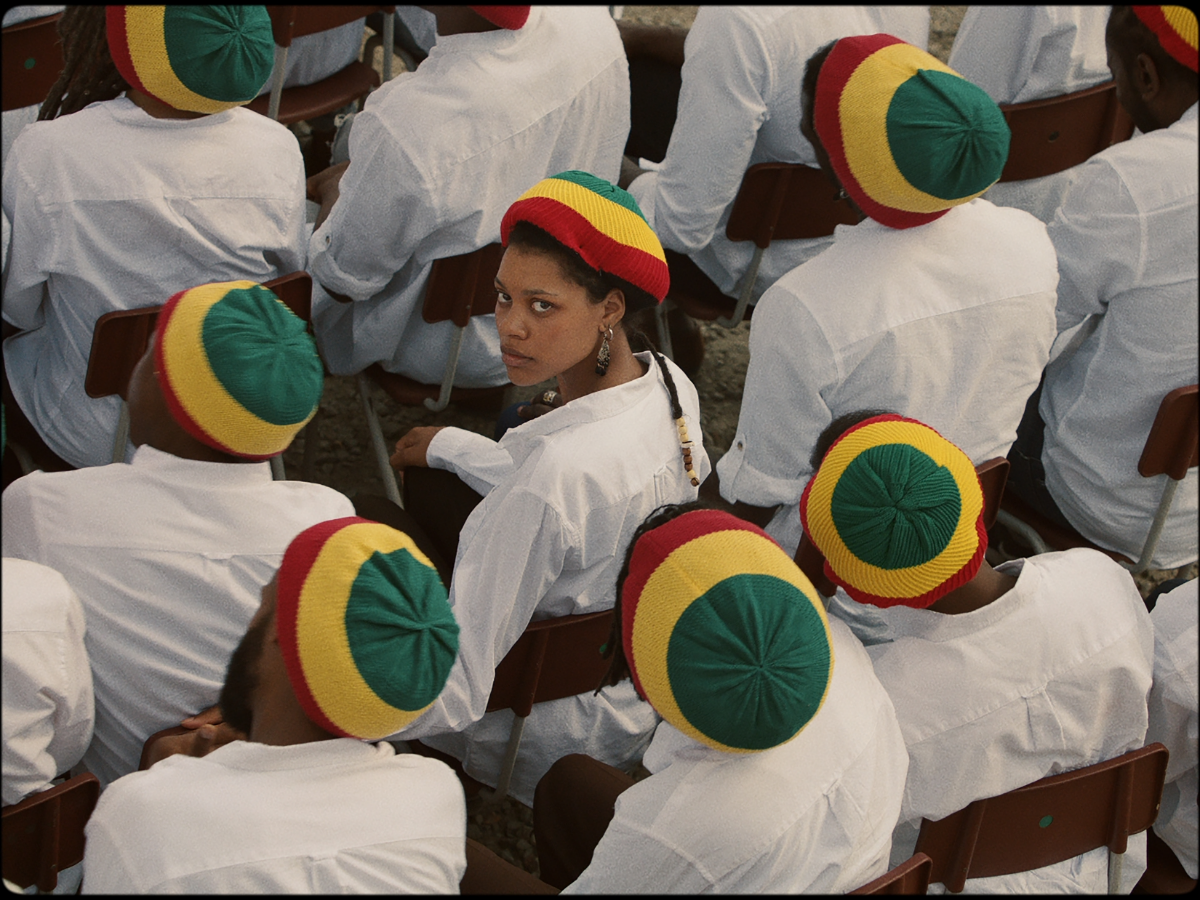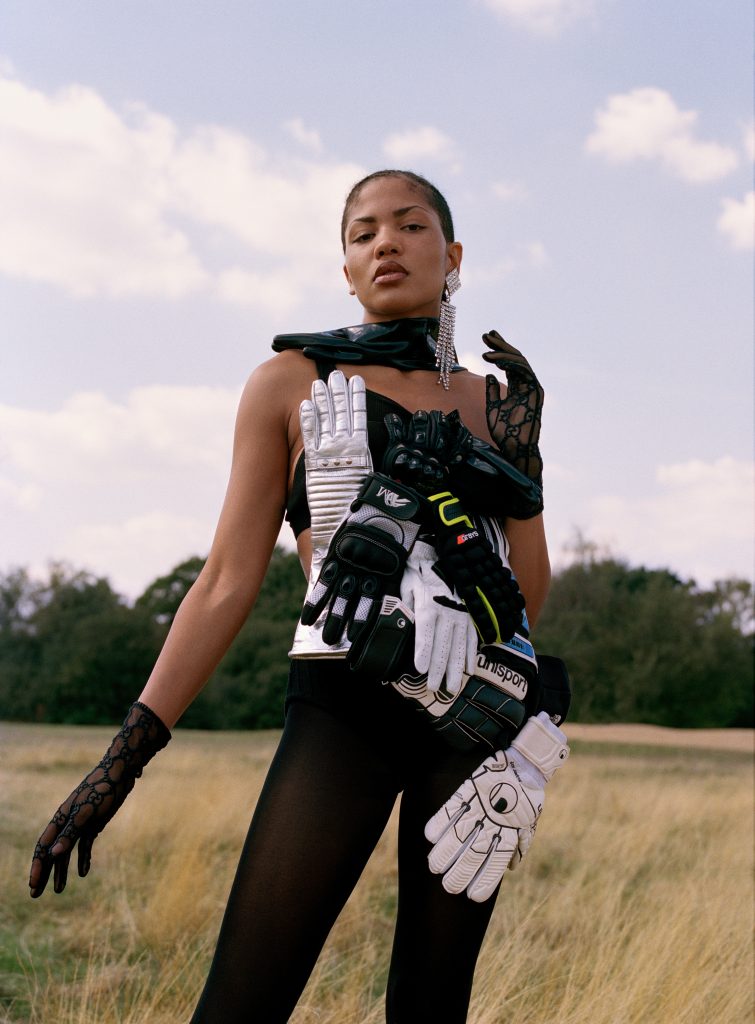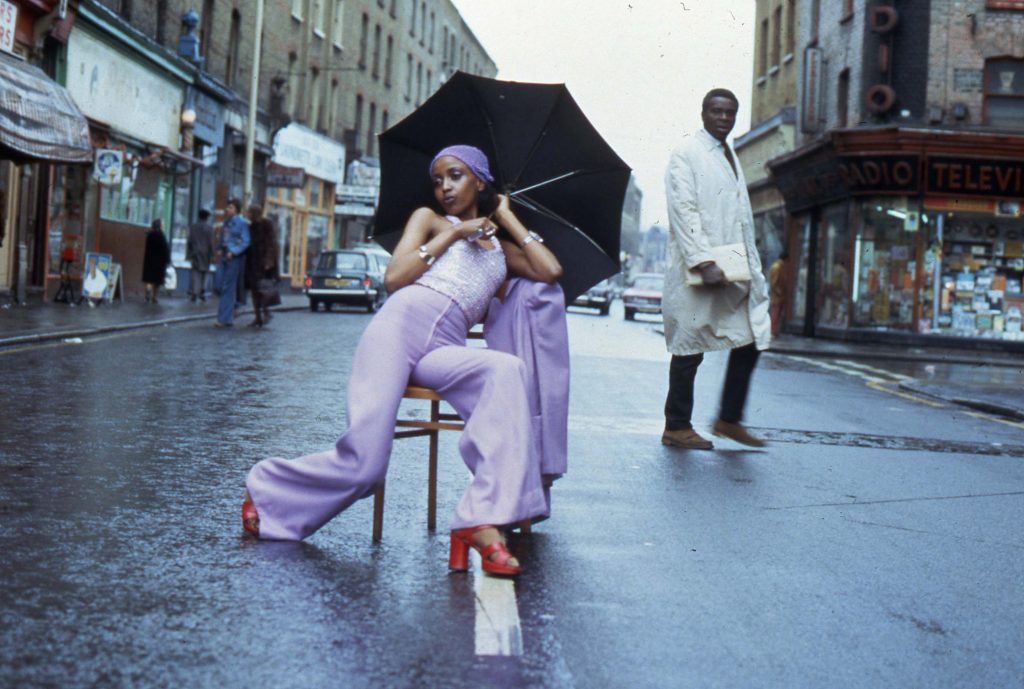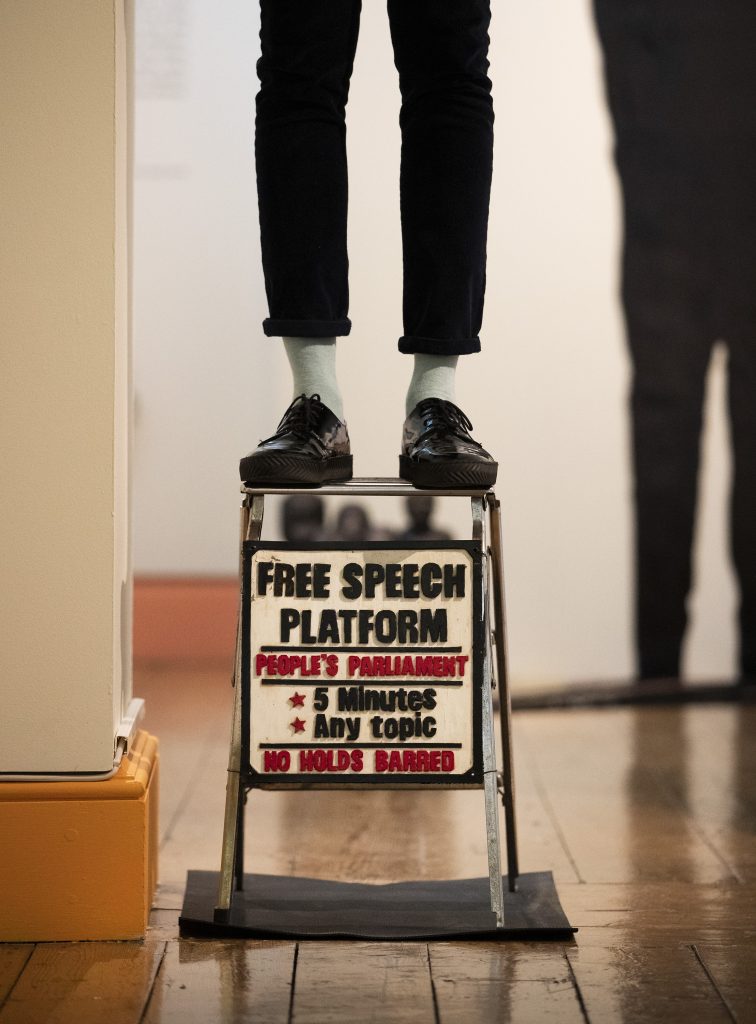
Get Up, Stand Up Now … and see this exhibition celebrating the expansive black British imagination
Precious Adesina
19 Jun 2019
A still from Neneh Cherry ‘Kong’, courtesy of Jenn Nkiru
There is a tendency when looking at an artist of colour’s body of work to question what they are saying about race, class, and society. This can force an artist’s work into a political discourse even when it doesn’t desire to be in one. And, showcasing around 100 black artists in an exhibition titled Get Up, Stand Up Now might give the impression that the curator is about to do the same.
A criticism of Get Up, Stand Up Now, curated by Zak Ové, could have easily been that it is yet another exhibition which lumps a large group of artists together with no justification other than their blackness, or simply regurgitates a storyline we’ve seen before. But what distinguishes Zak’s show from others on black artists is how he unifies the artists’ disparate messages without watering them down and, in turn, gives them their own agency. Get Up, Stand Up Now is about black creativity in Britain over the past 50 years. It’s purposefully broad.
“What I’ve tried to do is look at the contribution that Windrush brought to Britain,” Zak says. He hasn’t just assembled landmark artists from the 60s and 70s in the UK, Get Up, Stand Up Now showcases them alongside contemporary works. As such, creatives like Mowalola, Gaika, Martine Rose, Campbell Addy, Ronan McKenzie, Jenn Nkiru and Phoebe Boswell are just a few names who form this impressive ensemble.
“The sum of the parts create a galvanised voice which is able to be nuanced and show blackness in numerous forms. That is not a subject that can be easily placed within a western construct of what blackness means,” says Phoebe. “There’s a lot of consumption of black pain and of negative narratives when it comes to the black body. What I love about seeing the work in Get Up Stand Up Now is how strong the force of altering that is when you put all of our voices together.”

‘I’m Home, 3 Moments’, photography by Ronan McKenzie 
‘Fashion Shoot Brixton Market’, 1973, photography by Armet Francis
Phoebe’s three-part video, I Need to Believe the World is Still Beautiful, disrupts the white gaze by desexualising black women’s nude bodies and in turn reclaims how they are depicted in society. Each time the artwork is shown in a new space, its subject, Buitumelo, is asked what message should be written on the black wall behind her. This choice and constant renewal of the work gives Buitumelo back her autonomy. “I wanted there to be a beautiful complexity to black women,” Phoebe says of the piece.
It’s also difficult to avoid politics in an exhibition that centres around Zak’s father, Horace Ové, a prominent filmmaker who has never shied away from covering weighty topics. Horace’s spoof documentary for BBC2 called Black Safari (1972), depicts four African anthropologists, aiming to locate the centre of Britain. The black explorers ogle over the British men’s weird and exotic customs and the film’s overt absurdity turns the traditional idea of white explorers “discovering” new African traditions and lands on its head.
Ishmahil Blagrove Jr.’s, Free Speech Platform follows suit in its transparency. It is an actual platform which people can use to share their views, much like Open Platform at Speaker’s Corner in Hyde Park, where people would go to spark debates in the mid-1800s. By the 1990s public speakers would bring their own podiums along with them and Ishmahil’s stool looks portable. It has a sign stating “5 Minutes. Any topic. NO HOLDS BARRED” affixed onto it.

While all artists regardless of race should be allowed to make art for art’s sake, maybe what is more important is that an artist of colour is able to speak on their own terms. Take the disruptive work of Hassan Hajjaj. Hailing from Morocco, his photo of painter Lynette Yiadom-Boakye from his My Rock Stars series, which could easily be mistaken for a fashion shot, is also on display. Vibrant patterns and fabrics cover every part of the portrait. The discussion of his work could be left here without superimposing meaning on it, but that isn’t what Hassan wants.
“I am not a fashion photographer,” Hassan warns. “When you say it’s a fashion picture, it doesn’t become about the person, it becomes about clothes.” And for Hassan, it’s about documenting the life and style of the sitter rather than merely the clothes they wear. “I’m the generation that came from another country, my brothers were born here, my kids were born here, and some of my subjects are either born here or just come from another background. I’m telling their story.”
By telling the different stories that encompass black British history, Hassan gives a voice to those who aren’t often given the opportunity to speak openly. And much like Zak has done, it’s time to let artists use theirs too.
The exhibition runs until September 15










